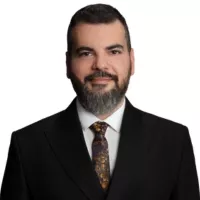- within Insolvency/Bankruptcy/Re-Structuring topic(s)
A patent is an intellectual property right that provides the owner of an invention with the exclusive right to benefit from the commercial use of the product, such as producing, selling and exporting for a set period time. Patents encourage pharmaceutical companies to invent and develop new drugs, therefore patent protection also serves the improvement of research and development, and thus human health.
Pharmaceutical companies must adhere to a number of rules and legislation that regulate the clinical research, production, distribution processes, drug safety, quality, efficiency, pricing, marketing and promotion of their products. Research and development costs for pharmaceuticals are high, as are the risks of failing to successfully obtain authorization to market a product. Patent protection gives originator pharmaceutical companies an exclusive right to manufacture, sell, and benefit from a drug, and prevents third parties from encroaching on their inventions.
Patentability Criteria and the Scope of Patent Protection
Industrial Property Law Numbered 6769 ("IPL") regulates patent rights in Turkey. According to Article 82/1, all pharmaceuticals can be patented on the condition that they comply with the general patentability criteria: novelty, inclusion of an inventive step, and applicability in industry, provided they are not included within the scope of non-patentable inventions stated in the IPL. The Turkish Patent and Trademark Office is authorized to receive all patent applications and to register patents.
In accordance with the provisions of Trade-Related Aspects of Intellectual Property Rights ("TRIPS") and Article 101 of the IPL, drugs are protected for 20 years. However, in practice, pharma companies do not benefit from patent protection for such a period. The 20 year duration of patent protection starts with the patent application; however, drugs cannot be released to the market immediately that they are patented. Even though a drug is patented, the Ministry of Health's authorization is required for its production, market release and sale. There is a long and extensive clinical research process that awaits pharma companies aiming to obtain a license for their patented drugs. As the length and complexity of the pre-license process expands, so does the cost to the pharma companies. The length of the pre-license process of a patented drug actually determines the de facto period of patent use in practice. Due to the fact that the clinical research process for patented drugs takes approximately 10-12 years, the de facto patent protection period is 8-10 years at the most. In order to compensate this loss, some governments such as the USA, Japan, and EU countries implement mechanisms such as supplementary protection certificates to provide an additional protection period, the patent period for drugs can also be extended by a maximum of five years. Turkey has not yet accepted supplementary protection certificates or any other similar mechanism.
Types of Pharmaceutical Patents
A patent can be given to a product or a process that provides a "new" and "inventive" way of doing something, or that offers a new and inventive technical solution to a problem, which is also capable of being made in industry.
All pharmaceuticals involve three types of patents: product patents, process patents and indication patents.
i. Product Patents
A product patent is the patent related to a new molecule or active substance produced for the first time for medical or veterinary purposes that was previously unknown. A product patent is the patent given to a chemical formula in which a drug contains active ingredients and excipients. A product patent provides the owner with an exclusive right to manufacture, sell, use and import a patented drug, as well as restricting the patented drug's use or possession for any reason other than personal use. There are various types of product patents; active ingredient (molecule) patents, crystal form (polymorph) patents, combination patents and formulation patents.
a) An active ingredient (molecule) patent is the patent obtained for an active ingredient when an unknown therapeutic qualification is discovered. Molecule patents protect the active ingredient that has therapeutic value. An active ingredient patent is the primarily protected, strongest patent right when compared with other types of product patents.
b) A patented active ingredient can be found in different polymorphic forms that can crystallize in multiple ways. Although their chemical formulas are the same, due to the different shapes of their crystals, polymorphic molecules can show physicochemical differences that affect a drug's performance (such as resistance, solubility and hardness). A polymorph cannot be patented if it is generated through the normal and inevitably expected result of the continuation of a patented active substance's production process, it is assumed that such a product already exists in prior art and is part of an already known technique.
c) Combination patents are granted for combinations of different active ingredients on the condition that they bring about a new and inventive technical solution other than the expected natural results of the combined active ingredients. The "new result" of the combination is expected to take the molecules' already existing effects to a better healing and "more effective" level, in order to be patented.
d) Formulation patents are granted for new formulations generated through the combination of active ingredients and other excipients. Formulation patents cover any compositions effecting a change to the active ingredient's route of administration, dosage, etc. However, formulations cannot be patented if they do not involve components that create a new and inventive solution, and do not show any effect other than the expected natural results.
It is important to mention that "treatment methods" cannot be patented under Turkish law, Article 82(3) of the IPL states inventions that cannot be granted a patent involve "c) all treatment modalities including diagnosis methods which are intended to be applied to human or animal bodies and surgical methods". However, the sixth paragraph of the same provision indicates that "(6) The provision mentioned in subparagraph (c) of paragraph 3 shall not be applied to the products, especially the substances and compositions which are used in any methods that are mentioned in the same option." This exception opens the door to patenting products that result in a different route of administration to the body, or a different dosage form, provided that the difference generated by the treatment also meets the conditions for novelty, an inventive step and industrial applicability.
ii. Process patents:
A process patent is a patent related to the method applied in the production or preparation of a drug. A process patent protects the chemical processes and methods used for the procurement of an active ingredient. The method of a drug's manufacture forms the subject of a process patent. Process patents are the "solutions" that generate a particular patented product or, such as in the fragmentation of an atom, give specific results other than generating products, and determine and contain a special technical order and the chemicals used in that order. Processes can be patented as long as the process itself or the product generated through such a process meets the conditions of novelty, an inventive step and applicability in industry.
Process patents provide owners with the right to claim the prevention of the de facto use of the patented process, prevention of proposing others to use a method patent, the sale, use or import of the products that are directly generated through the patented process or possessing these products for any reason other than personal use.
iii. Indication patents:
Active ingredients are protected with product patents as long as they meet the conditions for novelty, an inventive step and applicability to industry. If a molecule is used for the treatment of a particular disease, its pharmaceutical value is also protected under the patent's "first medical use" for the relevant therapeutic indication. However, a molecule's therapeutic effect for a different disease can be discovered after it has been patented. An indication patent is the patent given for the indications and results that are obtained after a molecule is administered to the body, in other words, when a new and non-obvious use of a known molecule in the treatment of a specific disease is discovered. Indication patents are granted in relation to the effects of any active substance on the body that were previously unknown and provides protection of the second or third use purpose of a drug with an indication patent.
With the revision made to the European Patent Convention in 2007, to which Turkey is also party, second medical use claims are explicitly allowed. Due to the fact that there is no particular provision provided in the IPL regarding the patentability of secondary use or restricting such patents, the Supreme Court of Appeals evaluates the patentability of secondary use in the scope of general provisions, which include the conditions for novelty, an inventive step and industrial applicability.1
Conclusion:
Granting a drug patent provides the patent owner with the exclusive right to prevent third parties from using, offering for sale, selling, or importing a product in a given country for a 20-year term as of the date of filing the patent application in the relevant country. Patent protection is an important element for originator pharmaceutical companies as it strengthens market-based incentives for pharma stakeholders in the private-sector to endeavour and invest resources in research & development, and the manufacture and marketing of new pharmaceuticals. These incentives are considered especially valuable for the development of pharmaceuticals because of the requirement for large financial and technical resources, particularly when combined with the high risk of failure even at a late stage in product development, as well as the reputational issues and legal responsibilities related to product liability.
This article has aimed to highlight the key points of pharmaceutical patents without including all aspects. You can find more detailed information by following our article series.
Footnote
1. The Decision of 11th Chamber of Supreme Court of Appeals numbered E. 2014/14787 K. 2015/8773 and dated 30.6.2015.
The content of this article is intended to provide a general guide to the subject matter. Specialist advice should be sought about your specific circumstances.



